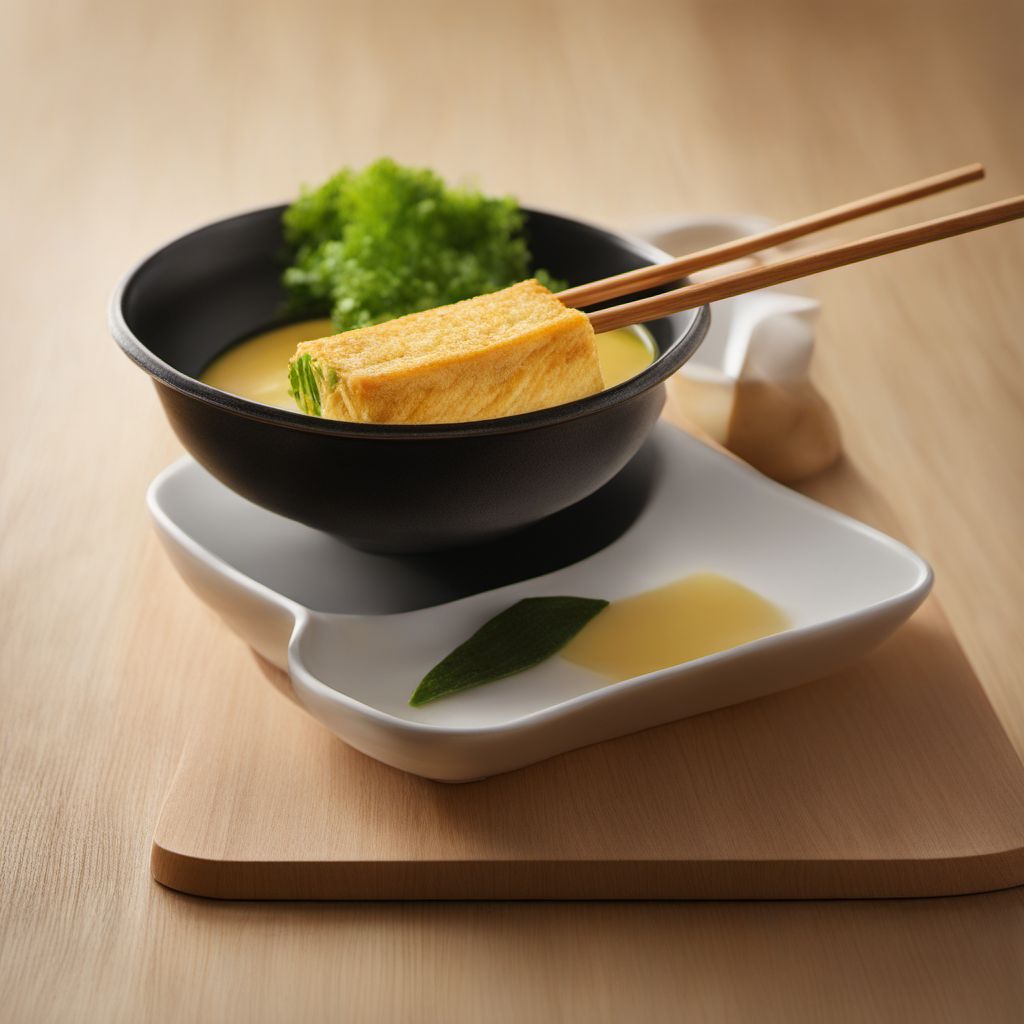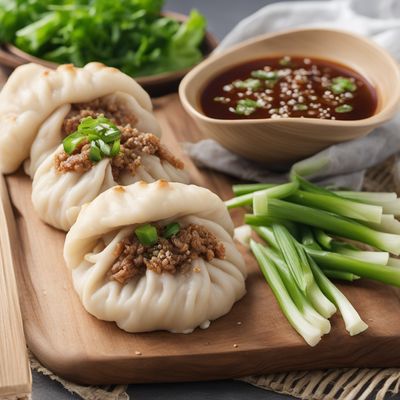
Recipe
Japanese Rolled Omelette
Savory Delight: The Art of Japanese Rolled Omelette
4.7 out of 5
Indulge in the flavors of Japan with this traditional dish, the Japanese Rolled Omelette. Made with a delicate balance of eggs, dashi, and soy sauce, this dish showcases the artistry and precision of Japanese culinary techniques.
Metadata
Preparation time
10 minutes
Cooking time
15 minutes
Total time
25 minutes
Yields
4 servings
Preparation difficulty
Easy
Suitable for
Pescatarian, Vegetarian (without dashi), Gluten-free, Low-carb, Nut-free
Allergens
Eggs, Soy
Not suitable for
Vegan, Dairy-free, Paleo, Keto, High-protein
Ingredients
-
4 large eggs 4 large eggs
-
1 tablespoon dashi stock 1 tablespoon dashi stock
-
1 tablespoon soy sauce 1 tablespoon soy sauce
-
1 teaspoon sugar 1 teaspoon sugar
-
1/4 teaspoon salt 1/4 teaspoon salt
-
1 tablespoon vegetable oil 1 tablespoon vegetable oil
-
Optional fillings: scallions, mushrooms, cheese Optional fillings: scallions, mushrooms, cheese
Nutrition
- Calories (kcal / KJ): 150 kcal / 628 KJ
- Fat (total, saturated): 10g, 2.5g
- Carbohydrates (total, sugars): 4g, 2g
- Protein: 12g
- Fiber: 0g
- Salt: 1g
Preparation
-
1.In a bowl, whisk together the eggs, dashi stock, soy sauce, sugar, and salt until well combined.
-
2.Heat a non-stick frying pan over medium heat and add the vegetable oil.
-
3.Pour a thin layer of the egg mixture into the pan and tilt it to spread the mixture evenly.
-
4.Once the bottom layer is cooked but still slightly runny on top, gently roll it from one end to the other using a spatula or chopsticks.
-
5.Push the rolled omelette to one side of the pan and add another thin layer of the egg mixture. Lift the rolled omelette and let the new layer flow underneath it.
-
6.Repeat the rolling and layering process until all the egg mixture is used.
-
7.Cook the rolled omelette for a few more minutes, ensuring it is cooked through but still soft and moist.
-
8.Transfer the rolled omelette to a cutting board and let it cool slightly before slicing it into bite-sized pieces.
-
9.Serve the Tamagoyaki warm or at room temperature, optionally garnished with scallions or other fillings.
Treat your ingredients with care...
- Eggs — Use fresh eggs for the best results. Room temperature eggs are easier to whisk and incorporate into the mixture.
- Dashi stock — If you don't have dashi stock, you can substitute it with chicken or vegetable broth for a slightly different flavor profile.
- Soy sauce — Opt for low-sodium soy sauce if you prefer to reduce the overall saltiness of the dish.
Tips & Tricks
- Use a rectangular or square-shaped frying pan specifically designed for making Tamagoyaki to achieve the perfect shape and thickness.
- Adjust the heat as needed to prevent the omelette from burning or sticking to the pan.
- Experiment with different fillings such as cooked shrimp, crabmeat, or vegetables to add variety to your Tamagoyaki.
- For a sweeter version, add a bit more sugar to the egg mixture.
- Practice makes perfect! Don't be discouraged if your first attempt doesn't turn out perfectly rolled. With time, you'll master the technique.
Serving advice
Serve the Japanese Rolled Omelette as a standalone dish for breakfast or as a side dish for lunch or dinner. It pairs well with steamed rice, miso soup, and a side of pickled vegetables for a complete Japanese meal.
Presentation advice
Arrange the sliced Tamagoyaki on a plate in a neat row, showcasing the beautiful layers. Garnish with finely chopped scallions or a sprinkle of sesame seeds for an added touch of color and flavor.
More recipes...
More Japanese cuisine dishes » Browse all

Soy Egg
Soy sauce marinated egg
Soy Egg is a vegan alternative to traditional hard-boiled eggs. It is made with soy milk and agar-agar, which gives it a similar texture and...

Karē
Curry
Karē is a Japanese curry dish that is typically made with meat, potatoes, carrots, and onions. It is served with rice.

Hishi mochi
Hishi Mochi
Hishi mochi is a traditional Japanese sweet made of mochi (glutinous rice cake) filled with sweet red bean paste and stacked in a diamond shape.






